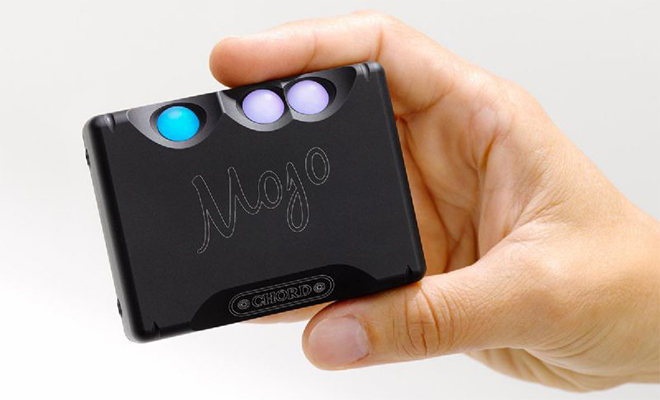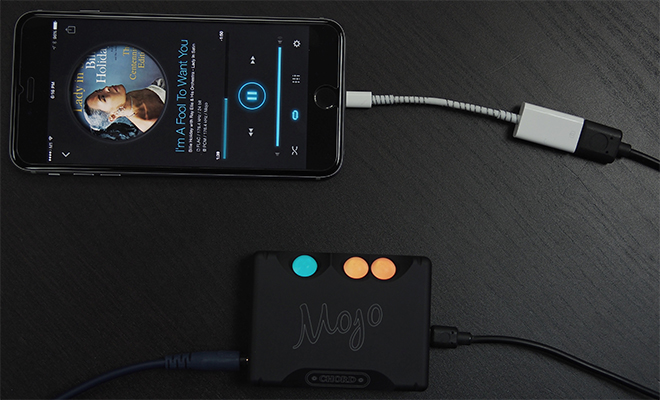
The Gen XY Lifestyle
This Mojo Strikes All the Right Chords (Review)
This curious little box is called the Chord Mojo; a portable Digital-to-Analog-Converter (DAC) designed for smartphone users interested in taking their interest in audiophile quality music further.
As the name suggests, DACs convert your music files from digital data to analog signals. Although digital data is a constant, the processing of that data differs from one device to another. Listen to the same piece of music through different brands of smartphones and music players, and you’ll hear the difference.
Most portable DAC units and Digital Audio Players (DAPs) are built around a commercially available DAC processor (made by Burr Brown, Wolfson, and Sabre, just to name a few) and an amplifier. Chord designs theirs with Field-Programmable-Gate-Arrays (FPGAs), which effectively is a very customised design. The approach, while unorthodox, is justified by the results.
Consumer technology today is mostly defined by a cycle of marginal upgrades, and hence the Mojo represents a refreshing change of pace. Yes, it costs S$999, which is a lot of money to ask from someone who is new to the audiophile world – and yet the price is the same reason that the Mojo represents a reasonable compromise. It’s capable of delivering levels of musical detail that some high-end devices can’t match, and has the ability to decode most audio files, including extremely high resolution DSD256 files (also known as quad DSD), effectively future-proofing it. (Update: DSD256 might be pushing it if you’re using a mobile phone as a source, as you get the occasional stutter) Despite its diminutive size it supports some of the most power-hungry headphones (yes, headphones draw power from your player) available – Sennheiser’s HD800, the AKG K700 series, and the HiFiMAN HE1000 come to mind.
Devilishly good in the Details
But its standout feature remains its ability to resolve detail to a high degree – very relevant in the context of high resolution music – which maximises the benefits of the extra information that these music files carry. It drives home the point of why you bother to jump on the ‘hi-res’ bandwagon to begin with.
The Mojo is excellent with headphones – it’s a little easier to pair with headphones as opposed to in-ears – and the voicing is pleasant, delivering clarity with considerable punch. The timbre of instruments is impeccable, and never at any point does the exacting detail become grating to the ears. You can almost feel the musical instruments come alive as you make out every shimmer of the hi-hat; the strident staccatos of a snare drum; the snap and snarl of a Stratocaster guitar; the crystalline wistfulness of a Rebecca Pidgeon vocal.
With USB, optical and coaxial connectors built-in, the Mojo is versatile enough to be used in a variety of situations. You can use it as an external DAC for your computer, or as a DAC upgrade for your existing portable audio players. Also, you don’t have to use it only with headphones; speakers work just as well. Thanks to its small size, it doesn’t take up a lot of space, and the battery life is good for a day’s use on the move. It’s charged via USB, so you can always use the same power banks to charge your phone for the Mojo.
Not all plain sailing
There is one major drawback though. It doesn’t go into standby if nothing is playing, and the battery will drain at pretty much the same rate. Many a time I’ve forgotten to turn it off and had the battery run dry. It also gets incredibly hot, especially if you charge and use it at the same time. If the battery runs out, you can’t really play and charge simultaneously as the Mojo draws power quicker than it can recharge. (Update: the Mojo will shut down as a safety feature once it exceeds a predetermined temperature, which in my case happened because the Mojo was held in a confined space, which made the heating issue worse. But the fact remains that it’s not advisable to charge and use at the same time while on the move) This is something that Chord will have to look into if they intend to entice mainstream audiences – a more forgiving device for less conscientious users.
Admittedly, the Mojo not the most comfortable thing to be carrying on the move because of the additional cables. And for that matter, you need to exercise due diligence to ensure that you have the proper OTG cables (for iOS and Android), optical or coaxial cables for Digital Audio Players (DAPs). Some phones may be susceptible to interference, or the require more steps to set up, so it’s best if you can do a demo before buying. We’ve tested it on an iPhone without issue, but your mileage may vary for Android-based phones – you’ve been warned. The Mojo isn’t completely plug-and-play friendly (plus you need to shell out money for apps such as the Onkyo HF Player or KORG iAudioGate for iOS) but at least the output justifies the effort.
Well worth the effort
Not everyone will be keen to carry an extra device just to further their listening pleasure, which is perfectly understandable. But if you ever thought about taking the plunge: the Chord Mojo may not be the cheapest way, but it punches so far above its weight that it may well be the smartest way. Even the most seasoned – and perhaps jaded – enthusiast will be able to raise a smile at this surprisingly capable little box. And that’s really saying something.
The Chord Mojo and other audiophile-related gear will be available for audition at the upcoming CanJam 2016. More details here.









